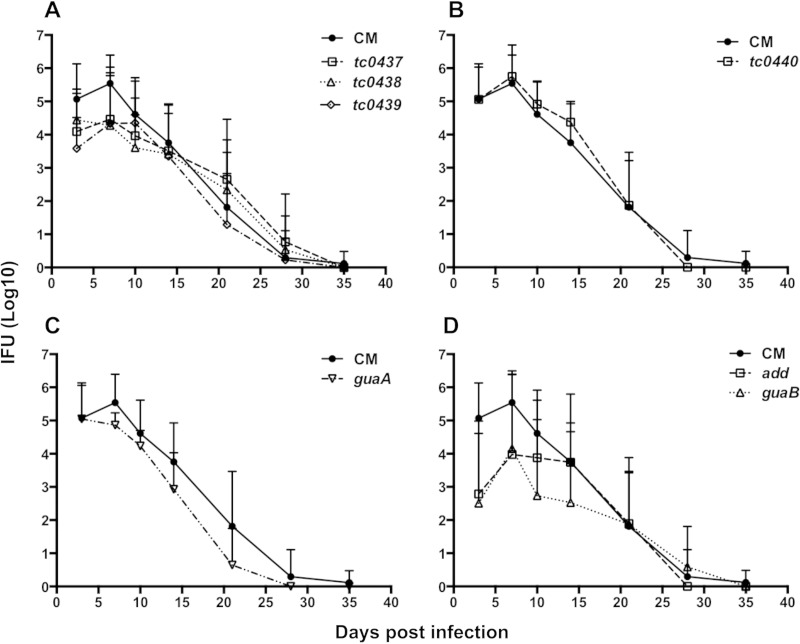FIG 6.
Mouse genital tract infections with C. muridarum PZ mutants. Groups of mice were challenged intravaginally with 50,000 IFU of C. muridarum (CM) or various PZ mutants. The infection curve for C. muridarum-infected mice (n = 30) is reproduced in each panel for comparison. (A) Lower genital tract shedding of IFU by mice infected with C. muridarum differed significantly from that by mice infected with the tc0439 mutant (n = 8) at day 3 postinfection (P < 0.01), but not that by mice infected with tc0437 (n = 8) or tc0438 (n = 8). (B and C) IFU shedding from mice infected with CM did not vary significantly from that from mice infected with the t0440 (n = 12) (B) or guaA (n = 16) mutant (C). (D) Shedding by mice infected with the add (n = 8) mutant was significantly less than shedding by mice infected with C. muridarum at 3 days (P < 0.0001) and 7 days (P < 0.01) postinfection. IFU shedding from mice infected with the add (n = 8) mutant was also significantly reduced at 3 days (P < 0.0001), 7 days (P < 0.05), and 10 days (P < 0.001) postinfection. The data are presented as mean numbers of IFU (+SD) for the mice in each group. Statistical differences were analyzed by two-way ANOVA with Bonferroni post hoc test.

